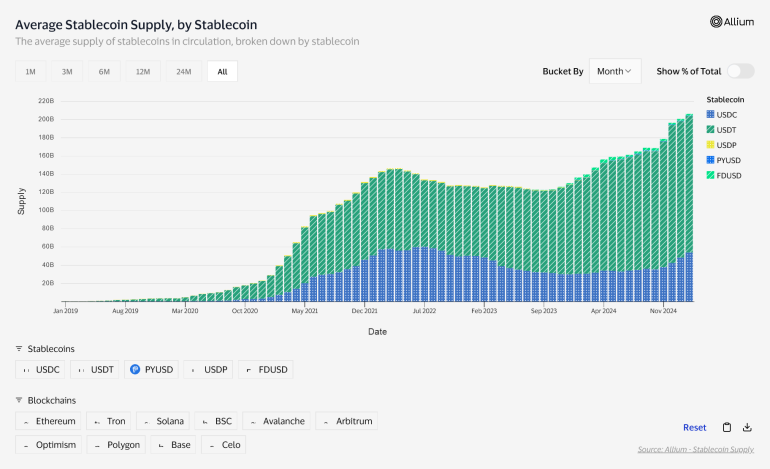If there is one sector of cryptocurrencies that has proven to be a resounding success, it is stablecoins. In just five years, the total supply of dollar-denominated stablecoins has grown from $3.9 billion to over $200 billion.
Before stablecoins, accessing dollars was complicated for many people around the world. In countries with strict capital controls or hyperinflating currencies, options were limited: costly bank transfers, cash, or informal markets with markups. Having a dollar account was a privilege reserved for the wealthiest or the well-connected.

But stablecoins changed everything. Today, anyone with an Internet connection can hold and send digital dollars without needing a bank. They are fast, cheap, and borderless, with no bank fees, no intermediaries, and none of the problems associated with cash. For those living in inflationary economies, stablecoins have been a real solution.
However, they also come with risks:
- The dollar continues to lose value over time, albeit at a slower pace than other fiat currencies.
- Counterparty risk: The stability of a stablecoin depends on the issuer properly managing reserves. If they fail, the stablecoin could lose its peg to the dollar.
- Protocol risk: Most stablecoins operate on Ethereum, Tron, and other blockchains that are more centralized and less secure than Bitcoin, exposing them to censorship or hacks.
Tether on Bitcoin: A Before and After
This week, at the PlanB Forum in El Salvador, Paolo Ardoino (CEO of Tether) and Elizabeth Stark (CEO of Lightning Labs) announced that Tether is coming to Bitcoin and the Lightning Network.
This means that the world's largest stablecoin, with 75% of the market and 350 million users, will now run on the most decentralized and secure network on the planet: Bitcoin.
Tether explained it this way:
This integration combines Bitcoin’s unparalleled decentralization and security with the speed and scalability of Lightning, redefining the role of stablecoins within the Bitcoin ecosystem.
Impact on Global Bitcoin Adoption
The impact of this is enormous. In 2024, Tether processed over $10 trillion in volume, while Visa handled $16 trillion. Now, all that stablecoin activity could flow through Bitcoin instead of other networks.
This opens massive opportunities:
- Merchants already accepting Bitcoin via Lightning can seamlessly integrate USDT.
- International payments will be faster, cheaper, and more secure.
- A new ecosystem of Bitcoin-based Decentralized Finance (DeFi), including lending, trading, and tokenization of real-world assets.
As Elizabeth Stark summarized:
Today marks a new era for stablecoins. Bringing USDT to Bitcoin combines Bitcoin’s security and decentralization with the speed and scalability of Lightning. Millions of people can now send dollars globally using the most secure and open blockchain in the world. It all comes back to Bitcoin.
The arrival of Tether to Bitcoin and Lightning is not just a technical upgrade but a key step toward a more decentralized global financial infrastructure. The future of digital payments is changing, and Bitcoin is at the forefront.








